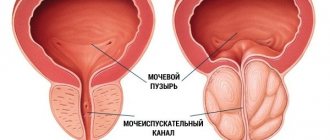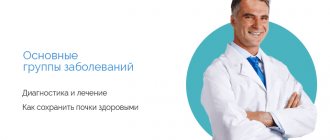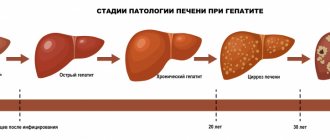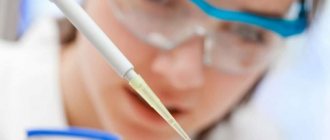Bacterial skin diseases are dermatological diseases caused by bacteria. These include pyoderma caused by streptococci, staphylococci or other gram-negative bacteria and other bacterial skin diseases - erysipelas, erythrasma, actinomycosis or Lyme disease.
Also included in this group of diseases are skin tuberculosis, syphilis and gonorrhea (they are described in separate chapters).
Causes of bacterial skin diseases
The content of the article
Human skin is the largest organ in the human body. Its surface is not sterile and is populated by numerous microorganisms, which under normal conditions do not cause infection.
The growth of pathogenic bacteria responsible for infections is prevented by tightly packed epithelial skin cells, an acidic pH (5.4-5.9), a relatively dry environment, and natural antibacterial substances in the skin. Therefore, bacterial skin diseases are relatively rare.
However, certain conditions associated with injury to the epidermis, disruption of its protective function (skin inflammation) or a general decrease in immunity (tumors, diabetes, AIDS) contribute to the involvement of the skin in the inflammatory process.
A different situation arises in the case of Lyme disease, since in this case the pathogen enters the human body through a tick bite.
Treatment of bacterial diseases
Just a hundred years ago, huge numbers of people died from bacterial infections. Everything changed when antibiotics were created. After this, the mortality rate dropped significantly. A modern person, if he consults a doctor in a timely manner, usually recovers quite quickly without any special consequences for the body.
All antibacterial drugs are divided into two types:
- bacteriostatic – their action is aimed at stopping the growth, spread and reproduction of bacteria;
- bactericidal - completely destroy microorganisms.
Depending on the severity of the disease, antibiotics may be prescribed to the patient orally (in the form of tablets) or intravenously (in the form of injections).
It should be remembered that quite often antibiotics cause the development of an allergic reaction, so it is advisable to prescribe antihistamines in parallel with their use.
If this does not help and a severe allergy develops, then the antibiotic should be replaced. The same must be done if side effects develop. It should be remembered that there is a possibility of developing antibiotic resistance, when the causative agent of the disease adapts to the antibiotic and the medicine stops working.
This is a huge problem in modern medicine. After all, if bacteria adapt to all types of antibiotics, then people will return to that terrible time when death occurred from the most insignificant infections for modern humans.
Therefore, there is no need to self-medicate and start taking antibiotics for any reason. Only a doctor can prescribe them!
Along with antibiotics, treatment of bacterial diseases includes the administration of prebiotics and probiotics, which help restore the composition of beneficial intestinal microflora and prevent the development of dysbiosis. In addition, taking multivitamin complexes and means to strengthen immune defense is indicated.
In order for toxins to be washed out of the body faster, the patient is recommended to drink plenty of warm drinks.
If the treatment was prescribed correctly and the patient fully complied with all the recommendations of the attending physician, then the outcome of infectious diseases is usually favorable. Everything ends with a complete recovery, without any serious consequences for the body.
In our online store we offer you the following remedies for the treatment of bacterial diseases, which can be used as part of complex therapy:
- Pulmocleans;
- Novomegin;
- Ivlaxin;
- Artemisin-M;
- Holegon;
- Probinorm;
- Phytosorbovite;
- Cetrazine.
You can purchase all of the above products by going to the page of the desired drug and making a purchase in any convenient way.
Folliculitis and fever
As the name suggests, it is an inflammation of the hair follicle. This condition manifests itself in the appearance of a single vesicle or numerous vesicles filled with purulent contents, sometimes riddled with hair in the center. Changes may appear on the face, trunk or limbs. Sometimes they are associated with depilatory procedures or shaving.
Folliculitis
The chronic form of folliculitis occurs more often in men on the face, especially on the chin, and less often on the scalp. This form is characterized by a duration of several months and the appearance of inflammatory tumors in the skin.
Treatment of acute inflammation of hair follicles with low intensity consists of skin disinfection and the use of topical medications containing an antibiotic. However, treatment for folliculitis is often difficult and lengthy.
What are bacteria?
The content of the article
Bacteria are prokaryotic organisms, mostly single-celled. They do not have a nucleus, but have DNA molecules of different sizes. They can have different shapes, such as round (the most common), oblong or club-shaped. Interestingly, some of them are found alone, while others are found in groups, forming colonies.
Bacteria are:
- large DNA molecule;
- smaller molecules;
- cell membrane;
- cell wall;
- flagella;
- cilia.
Furuncle
It is also an inflammation of the hair follicle and surrounding tissues. The difference with follicular inflammation is that during the formation of a boil, death and destruction of the tissue around the follicle occurs. A tumor is formed containing dead tissue, which either spontaneously or as a result of intervention is separated, leaving a skin defect.
Furuncle
The damage takes several days to form and is often painful. The skin is initially bright red and swollen, and after a few days a pimple forms on its surface. After healing, a scar may remain.
Viruses, microbes, bacteria - what are they?
Viruses
Strictly speaking, viruses are not exactly creatures: scientists call them non-cellular life forms or even organisms on the border of life. This is because viruses1 do not have an important property of living things - a cellular structure, which is found in all animals, plants, fungi and bacteria. They do not have their own metabolism, so they cannot live on their own. To exist, they always need another organism; in fact, viruses are intracellular parasites.
The sizes of viruses range from 20 to 350 nm (a nanometer is one millionth of a millimeter). The smallest are parvoviruses, which cause diseases in animals: only 18 nm in diameter. Larger influenza viruses: 80–120 nm. And the causative agents of smallpox and trachoma are absolutely “giants”: they reach 300 nm, and they can even be viewed with a regular light microscope (and to see smaller viruses, you need an electronic one).
Although viral diseases have haunted people at all times, viruses themselves were discovered only recently by historical standards: their existence was confirmed in 1892 by Russian microbiologist Dmitry Ivanovsky. As a student, he studied plant diseases and became interested in the nature of tobacco mosaic disease. After several years of experiments, Ivanovsky was able to see clusters of the causative agent of this disease in a light microscope, after which he spoke about his research in an article. And the first causative agent of a human viral disease, yellow fever, was discovered only in 1901. And only in 1937 was it possible to develop a vaccine against it, but this disease has been killing people for several centuries! Since their discovery, viruses have been actively studied, but most of them are still not even systematized. But new viruses appear regularly! Moreover, there is not even a single hypothesis about how viruses originated that all virologists would agree with. Some consider them to be descendants of pre-cellular life forms, others - “escaped” genetic structures that have won a little independence from cells. But the number of all viruses on the planet has already been calculated: 10 to the 39th power is more than stars in the Universe. Before obtaining such a number, scientists found out that more than 800 million viruses accumulate every day in a square meter of the lower layer of the earth’s atmosphere.
Viruses are designed very succinctly - because of this, scientists once considered them to be inert crystals. These “crystals” look different in appearance - they can be spherical, spiral-shaped, oblong. But, in essence, any viruses are just a shell containing genetic material in the form of DNA or RNA molecules. This “or” is an important difference between a virus and us living beings: our cells always contain both: DNA and RNA. But what we have in common with the virus is the desire to multiply our genetic material. To do this, viruses must enter a living cell. It happens that the viral genome simply integrates into the host DNA, and years may pass before the virus “wake up.” And if the virus enters the germ cells and integrates into the chromosomes, then it will be transmitted to the descendants of the host. The human genome contains a lot of such inclusions (approximately 8%) obtained millions of years ago during evolution. Some of them are gradually destroyed, while others have proven useful to us and are involved in physiological processes. For example, in 2021, scientists found3 that a gene of viral origin plays a critical role in the formation of our long-term memory.
But what if the virus doesn’t want to hide, but craves activity? Then its genetic material actually takes over command in a living cell: it forces it to multiply its copies, which penetrate into more and more new tissues and organs. And during this “stamping”, a process occurs due to which viruses acquired the reputation of insidious killers. New viruses are not produced as 100% copies; some come out with an “error,” i.e., a slightly altered genome. These are viral mutations that help the microorganism survive, despite the efforts of the body, which is actively fighting the infection. Due to mutations, viruses can look different and deceive the immune system - it has to re-acquaint itself with it and develop a fight strategy. This trick is actively used by influenza viruses, which mutate continuously and come to us every year in the form of new strains. But the most successful situation for a virus is to be in the same cell with its “colleagues” of another species: for example, when human, bird and monkey viruses meet. Then they can exchange entire pieces of the genome, and the result will be a fundamentally new strain, a powerful and dangerous mutant that even interspecies barriers will not stop - it can first infect an animal and then a person. Such viral experiments tend to happen in hot, overpopulated countries where sanitation is poor and people are more likely to come into contact with wild and farm animals. That's why we hear so often that a new infection has broken out in Southeast Asia.
Bacteria
Unlike viruses, bacteria are the most living organisms, although they are also very small (up to 10 microns long, that is, one hundredth of a meter). They are single-celled, but this one cell can have different shapes: bacteria can be round, in the form of rods, stars or cubes, there are even corrugated and C-shaped ones. Bacteria are more complex in structure than viruses - they have a cell wall, intracellular structures, organelles, and flagella for movement. They live and reproduce independently (using simple division).
Bacteria are one of the first inhabitants of the Earth, and they are also the most ubiquitous - they are found even in places where no one can survive at all. Bacteria are not afraid of either cold or acidic springs, where the water temperature is almost 100° C. They live in the Dead Sea, in the lower layer of the stratosphere, in the Mariana Trench, and even in radioactive waste. Scientists have described approximately 10 thousand species of bacteria, but in reality there are many more. The first to see bacteria was the Dutch scientist Antonie van Leeuwenhoek in 1676. He wanted to find out why hot pepper irritates the tongue, and decided to study the pepper tincture under a microscope. Imagine the naturalist’s surprise when he saw moving creatures in a tiny drop! Leeuwenhoek called them “animakuli” and began looking everywhere: in rainwater, on clothes, in scrapings from his own teeth. He spoke about his observations in a letter to the Royal Society of London for the Advancement of Knowledge of Nature. But real interest in Leeuwenhoek’s discovery arose much later, closer to the middle of the 19th century, when the cell theory began to develop.
Microbes
When you tell your child that there are a lot of germs around, you are not wrong. Microbes, or microorganisms, is the collective name for all living things that are smaller than 0.1 mm and cannot be seen with the naked eye. These include protozoa (microscopic single-celled animals), bacteria and tiny fungi, as well as viruses (not all scientists agree with this, since viruses are still not living organisms). The term “microbe” combines the Greek μικρό (small) and βίος - life. Most microbes consist of a single cell, but some are multicellular.
Furunculosis
Most often, the development of one boil occurs quickly, and healing occurs within a few days. However, it should be remembered that in the case of boils in the facial area, especially around the orbit, nose, upper lip and auricles, due to the specific vascularization of these areas and the close proximity of important structures of the central nervous system within the skull, serious complications can occur.
Furunculosis is a condition in which many boils occur. Numerous changes tend to coalesce and form larger tumors. These symptoms often occur in malnourished people with underlying medical conditions such as cancer or diabetes.
Treatment of boils should be carried out by a dermatologist. For a single boil, topical antiseptics and astringents are usually sufficient. Multiple boils or clustered boils should be treated with systemic antibiotics. Fusion of purulent tumors requires surgical intervention.
Rosacea
This is an acute inflammation of the skin and deeper tissues.
The disease can occur at any age. Skin lesions are most often localized on the face and lower extremities. The inflammatory focus of the skin is bright red, swollen, clearly demarcated from the environment, the skin is smooth and shiny. The disease is characterized by a sudden onset. Skin changes are accompanied by fever, chills and cold-like symptoms.
Rosacea
This disease can cause serious systemic disorders and should always be treated by a doctor. Without treatment, rosacea can lead to the spread of purulent infection into surrounding tissues, introducing bacteria into the bloodstream and thus causing sepsis.
The main therapeutic method for rosacea is the use of antibiotics in general. Compresses with astringents can be used locally.
Probiotic bacteria
Beneficial bacteria in the intestinal microflora are called probiotics. They come from outside through food (certain foods) or medications. Probiotic bacteria are mainly strains of Lactobacillus and Bifidobacterium. They can be found in yoghurts, kefir, cheeses (but not pasteurized ones), pickled cucumbers, cabbage, and kvass.
These bacteria are able to restore the balance of intestinal microflora after illness, strengthen natural immunity, and improve digestion processes. In addition, they stimulate the body to produce antibodies that protect it from another infection. Disturbed intestinal microflora can contribute to more frequent infections, both viral and bacterial.
Infectious impetigo and hepatitis
This is an acute bacterial skin disease that often affects children. As a result of the growth of bacteria, blisters filled with serous or purulent contents form on the skin. After a few days, the blisters burst, forming crusts with a characteristic honey-yellow color.
Infectious impetigo
The changes usually occur around the mouth and nose, but can occur anywhere. If the infection covers the deeper layers of the skin, small ulcers occur. Skin changes are not accompanied by general symptoms. Impetigo is highly contagious, so the epidemic can affect kindergartens and boarding schools.
The disease always requires medical consultation. Treatment with topical disinfectants and antibiotics is most often effective and sufficient.
Erysipelas
Erysipelas is caused by capillary hair bacterium. This is a pathogen found in animals, most often in cattle, less often in birds and fish. Infection occurs through direct contact with raw meat, poultry or fish, so skin lesions are most often localized on the hands and fingers.
Erysipelas
The disease is not transmitted from person to person. Initially, swelling and erythema appear at the entry site. The lesion then spreads peripherally with a tendency to heal centrally. The changes are not accompanied by general symptoms.
Diagnosis of the disease requires consultation with a dermatologist. The choice of treatment is general antibiotic therapy under medical supervision.
What diseases are caused by viruses?
Among all the viruses studied (and this is about 6000), a very small part is pathogenic. Human viral diseases - influenza, measles, smallpox, polio, mumps, rubella, herpes, infectious mononucleosis, hepatitis, encephalitis, AIDS, etc. In animals - foot and mouth disease, plague, rabies. Plants have various mosaic diseases and jaundice. Basically, viruses do not cause harm or benefit. Among them, the most important for us are viruses that only infect bacteria: they are called bacteriophages, that is, “bacteria eaters.” They are used in agriculture to protect animals and plants from bacterial diseases. There is also an assumption that viruses help ruminants convert cellulose into sugars, which then become milk or participate in weight gain. Another merit of phages is the regulation of the number of bacteria in the ocean. The microorganisms that live there produce almost half of the earth's oxygen. If one type of bacteria suddenly begins to multiply uncontrollably, the entire food chain will be disrupted, and many species simply will not survive. Some viruses have become important components of symbiotic systems—natural “partnerships” in which organisms of different species help each other. For example, grass grows on hot soil near geysers in Yellowstone National Park (USA), which survives in extreme conditions only thanks to a fungus infected with a certain virus. And there are viruses that slow down the development of dangerous diseases in humans: for example, people infected with hepatitis G have a milder course of another infection - Ebola fever, also a viral disease. And viruses can also be used against bacterial infections: this was practiced in the USSR back in the 1920s. Today, bacteriophages are even “trained” to destroy cancer - this is called oncolytic viral therapy. As you can see, killing viruses outright is a bad idea given the benefits they bring. In addition, this is impossible even theoretically: in order to develop a universal viral poison, we must first study absolutely all viruses. In the short term this is impossible.
Actinomycosis
The disease is caused by the bacterium Actinomyces israeli. This microorganism can live in the human mouth without causing disease. As a result of injury to the mucous membrane, the pathogen can penetrate deeper, causing actinomycosis. The development of the disease is predisposed by inflammation of the oral cavity accompanied by tooth decay, periapical infections of the teeth, and inflammation of the gum pockets. Skin changes occur on the face and neck.
Initially, they take the form of inflammatory tumors, which then disintegrate, forming fistulas, that is, channels that emerge from the surface of the skin. In purulent discharge from fistulas, characteristic yellowish grains are found. Skin changes may be accompanied by general symptoms such as fever and flu-like symptoms. Actinomycosis can also affect the internal organs of the chest and abdominal cavity.
Diagnosis and treatment of the disease requires the mandatory participation of a dermatologist, and sometimes a surgeon. For treatment, general antibiotic therapy is prescribed. Surgical treatment is used to empty pus reservoirs and remove fistulas.
Bacterial and viral diseases of humans. Their prevention
Many organisms belonging to different systematic groups are parasites of humans and cause diseases. Diseases whose causative agents are microscopic (viruses, bacteria and protozoa) are called infectious.
Depending on the nature of the pathogens, different types of infectious diseases are distinguished:
1. Viral, for example coronavirus, influenza, ARVI, measles, smallpox, HIV infection, viral hepatitis, tick-borne encephalitis, yellow fever.
2. Bacterial, such as plague, cholera, tetanus, anthrax, streptococcal and staphylococcal infections, whooping cough.
3. Protozoans (caused by protozoa, that is, single-celled eukaryotes), such as malaria, sleeping sickness, amoebic dysentery, toxoplasmosis.
4. Fungal, for example candidiasis, athlete's foot (foot fungus).
5. Prion (caused by special infectious proteins) - “mad cow disease” (BSE), kuru.
Pathogens of different groups are sensitive to different drugs. Therefore, drug treatment of the disease can be carried out only after diagnosing the nature of the disease and understanding the nature of its causative agent. Thus, most antibiotics act on bacterial cells, while viruses are a kind of non-cellular life form. Therefore, it makes no sense to treat viral diseases with antibiotics. Antiviral agents are used to combat viruses (it should be noted that highly specific and effective antiviral agents have appeared relatively recently and do not exist for all viral diseases).
history of infectious disease research
nature of pathogens
The idea of the contagiousness of diseases, in particular such as plague, smallpox, cholera, originated among ancient peoples. The simplest precautions against infectious patients were used even before our era. However, these guesses were still far from scientific knowledge about the nature of the disease.
Already in Ancient Greece, some philosophers expressed the idea of living pathogens of infectious diseases, but these scientists could not confirm their assumptions with any reliable facts. The outstanding ancient Greek physician Hippocrates (about 460–377 BC) explained the origin of epidemics by the action of “miasma” - infectious fumes that supposedly can cause a number of diseases.
antiseptics and asepsis
It is interesting that Pasteur, who was not a doctor, completely correctly assessed the significance of his discovery for medicine. In an address to members of the Paris Academy of Surgery in 1878, he said: “If I had the honor of being a surgeon, then, aware of the danger posed by the germs of microbes present on the surface of all objects, especially in hospitals, I would not limit myself to caring for absolutely clean instruments; Before each operation I would first wash my hands thoroughly and then hold them over the flame of the burner for a second; I would preheat lint, bandages and sponges in dry air at a temperature of 130–150 ºC; I would never use water without boiling it.”
Antiseptics (Latin “anti” - against, “septicus” - rotting) is a system of measures aimed at destroying microorganisms in a wound, pathological focus, organs and tissues, as well as in the patient’s body as a whole, using mechanical and physical methods of influence, active chemicals and biological factors.
The founder of antiseptics is considered to be the English surgeon Joseph Lister (1829–1912), who, after reading the works of Pasteur, came to the conclusion that microorganisms enter the wound from the air and from the surgeon’s hands. Convinced of the antiseptic properties of carbolic acid, he used a bandage with its solution in the treatment of an open fracture and subsequently used it to disinfect equipment and wounds. Before the advent of antiseptics, surgeons almost never took the risk of operations associated with opening the cavities of the human body, since interventions in them were accompanied by almost one hundred percent mortality from surgical infections. Professor Erikoen, Lister's teacher, stated in 1874 that the abdominal, thoracic, and cranial cavities would forever remain inaccessible to surgeons. Asepsis is a set of measures aimed at preventing the entry of microorganisms into the wound. Asepsis should be distinguished from antiseptics, which aims to destroy inflammatory agents already present in the wound. The German surgeon Ernst von Bergmann is considered one of the founders of asepsis. He proposed physical methods of disinfection - boiling, burning, autoclaving. The basis of asepsis is sterilization - the destruction of microorganisms and their spores. Sterilization should not be confused with disinfection, which does not destroy microbial spores. There are various methods of sterilization: autoclaving (pressurized steam treatment), calcination or burning with fire, immersion in antiseptic solutions, treatment with ionizing radiation (for example, in factories for the production of syringes and other disposable equipment).
Is it possible to completely cure bacterial dermatological diseases?
In most cases of bacterial skin diseases, treatment with antibiotics is effective and leads to complete recovery. However, in patients with compromised immune systems, such as those with diabetes, cancer, rheumatoid arthritis, or HIV infection, bacterial skin infections can be chronic or recurrent and pose a serious health problem, causing serious complications.
ONLINE REGISTRATION at the DIANA clinic
You can sign up by calling the toll-free phone number 8-800-707-15-60 or filling out the contact form. In this case, we will contact you ourselves.









